The French Copper Black Marans chicken is a beautiful bird that is, at long last, gaining popularity here in the United States. Originating in the town of Marans, France, these chickens are well-known for their rich, dark chocolate brown eggs. Marans were brought to the U.S. in the early 1900s and were initially used as ornamental birds. However, it wasn’t until recently that they gained popularity as egg-laying machines.
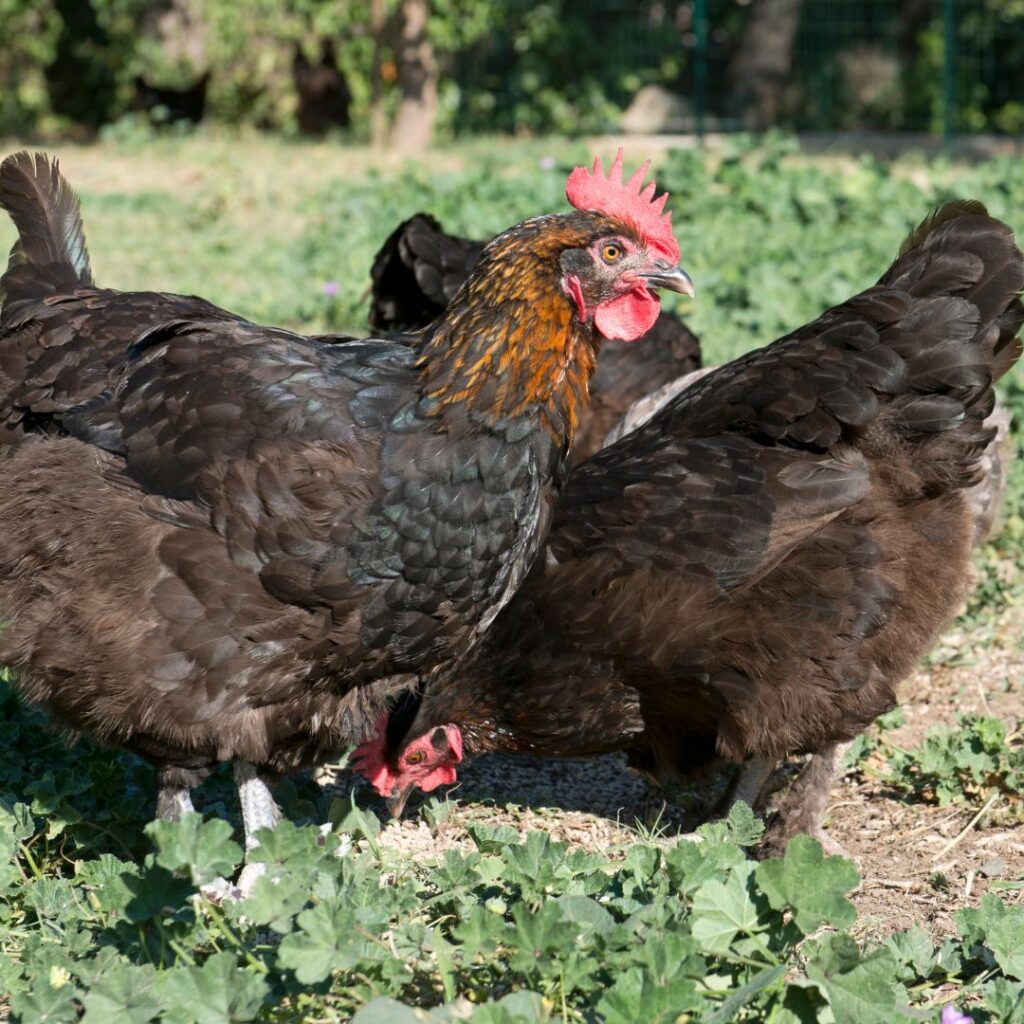
Marans lay large eggs with dark brown shells. Egg production can vary depending on the individual hen, but you can expect your Marans to lay anywhere from 150-200 eggs per year. These chickens are also known for being friendly and docile, making them a great choice for backyard chicken keepers of all experience levels.
The History of French Black Copper Marans
Whether or not you’re a fan of the Black Copper Marans chicken, you may be surprised that the APA has only recognized the breed for about a decade (since 2011). But its history goes back much further – in fact, it originated in Western France in the early 1900s and was recognized by French (and the Poultry Club of Great Britain) poultry associations in the 1930s.
Early on, they were called Swamp chickens because of the geographical area they originated from, having more swamp lands.
There are several varieties of the Marans chicken. The original was as poule de Marans. Local farmers began breeding the birds with barn chickens and gamecocks from Russia and India, producing the Marandaise fowl.
Over the upcoming years, the various Marans were further improved. Breeders crossed them with Brahmas, Malines, Langshan, and other chickens. The ancestors of the Marans as we know them today came about from these efforts.
In France, the Marans were known primarily for their rich brown-egg color.
While the plumage of these birds varied greatly at first, a concerted effort began in 1921 to unify the various varieties. Mrs. Rousseau became known for her work breeding and standardizing the Cuckoo Marans, leading to its recognition as one of the six officially recognized Marans types in 1930. These included white-black, black copper, ermine, silver cuckoo, gold cuckoo, and red.
This breed dealt a nearly fatal blow during World War II. With France devastated by war, the Marans breed suffered greatly and was in danger of becoming extinct.
However, thanks to the French Department of Agriculture’s efforts, dedicated amateur breeders, and efforts of their breeding program, the Marans were slowly brought back from the brink.
Today, they are thriving again and known for their richly colored eggs, hearty constitution, and gentle temperament.
Black Copper Marans Breed Standard and Appearance
When it comes to breeding chickens, maintaining a universal breed standard is important for ensuring the health and well-being of the animals.
In Black Copper Marans, the copper plumage must have a true copper tone (no blond or mahogany is allowed).
black copper maran rooster vs hen
Roosters must also have black breasts with a black triangle on their wings.
The wattles, combs, lobes, and faces must all be red, while the beak should be strong and horn-colored with a slight hook. The shanks and feet should be pink or slate, with a whitish sole to match the bird’s skin color.
Adhering to these standards helps to maintain genetic diversity and prevent any health issues within the breed.
Ultimately, following a universal breed standard helps ensure every Black Copper Maran is healthy and physically sound.
The males weigh around 7-8 pounds, while the females weigh slightly less at 6-7 pounds.
What Baby Black Copper Marans Chicks Look Like
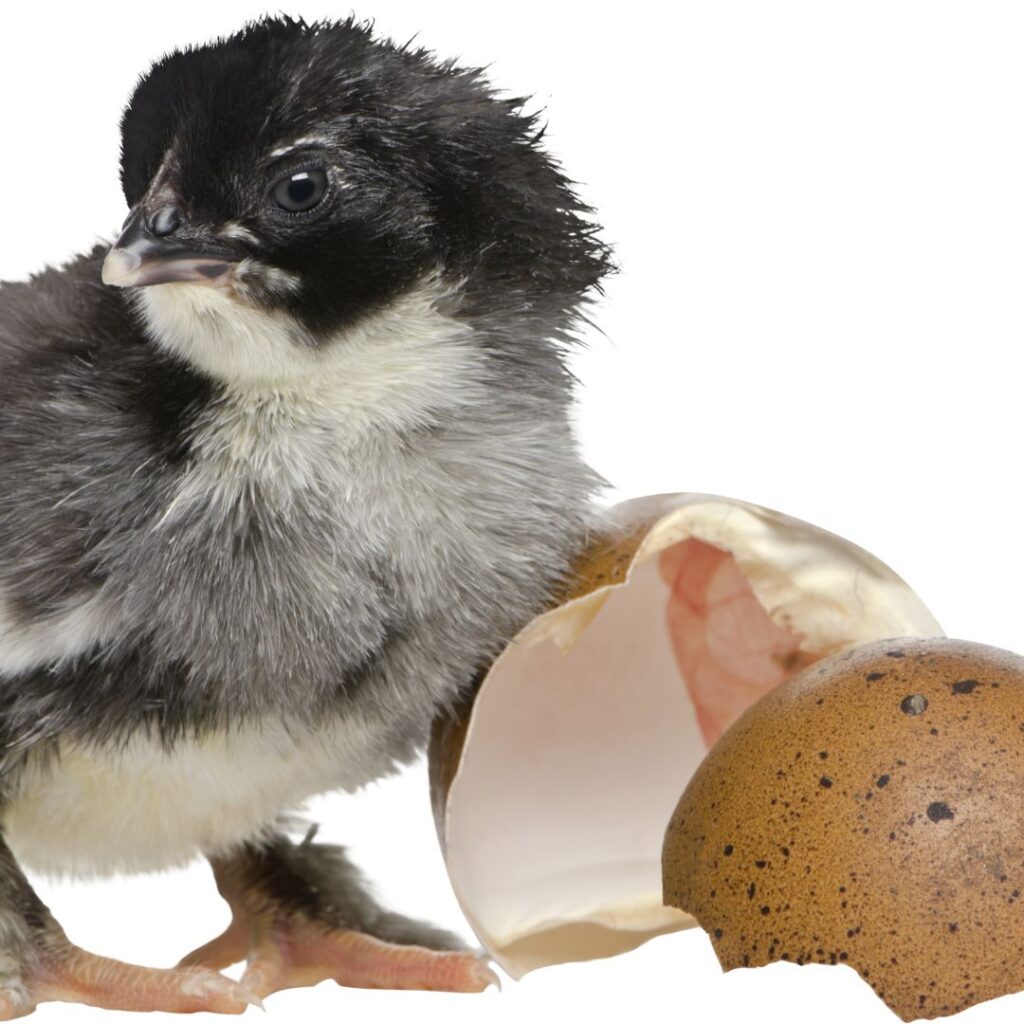
Variations of the Black Copper Marans Recognized by The APA
The American Poultry Association recognizes the Marans chickens in the Continental Class as large fowl. There are four recognized varieties (colors).
Black
Black Copper
Wheaten
White
The Marans Chicken Club USA identifies other Marans varieties/ color variations. Those colors are:
- Black/Blue Silver
- Marans Recognized Variety Black Tail Buff
- Blue
- Blue Copper
- Blue Wheaten
- Columbian
- Cuckoo
- Gold/Silver Crele
- Golden & Silver Salmon
- Silver & Lavender Wheaten
- Splash
The feathered legs are the primary difference between the breeds of the U.S. APA’s accepted breeding program and the other countries/ regions. Marans in the U.S. is clean-legged Marans.
There is no recognized Bantam Marans by the American Bantam Association. However, there are bantams out there. Research turned up some breeders in the U.K. and Europe. One breeder in the U.K. showed Blue Bantam, French Black Copper Bantam Marans, and Splash Bantams.
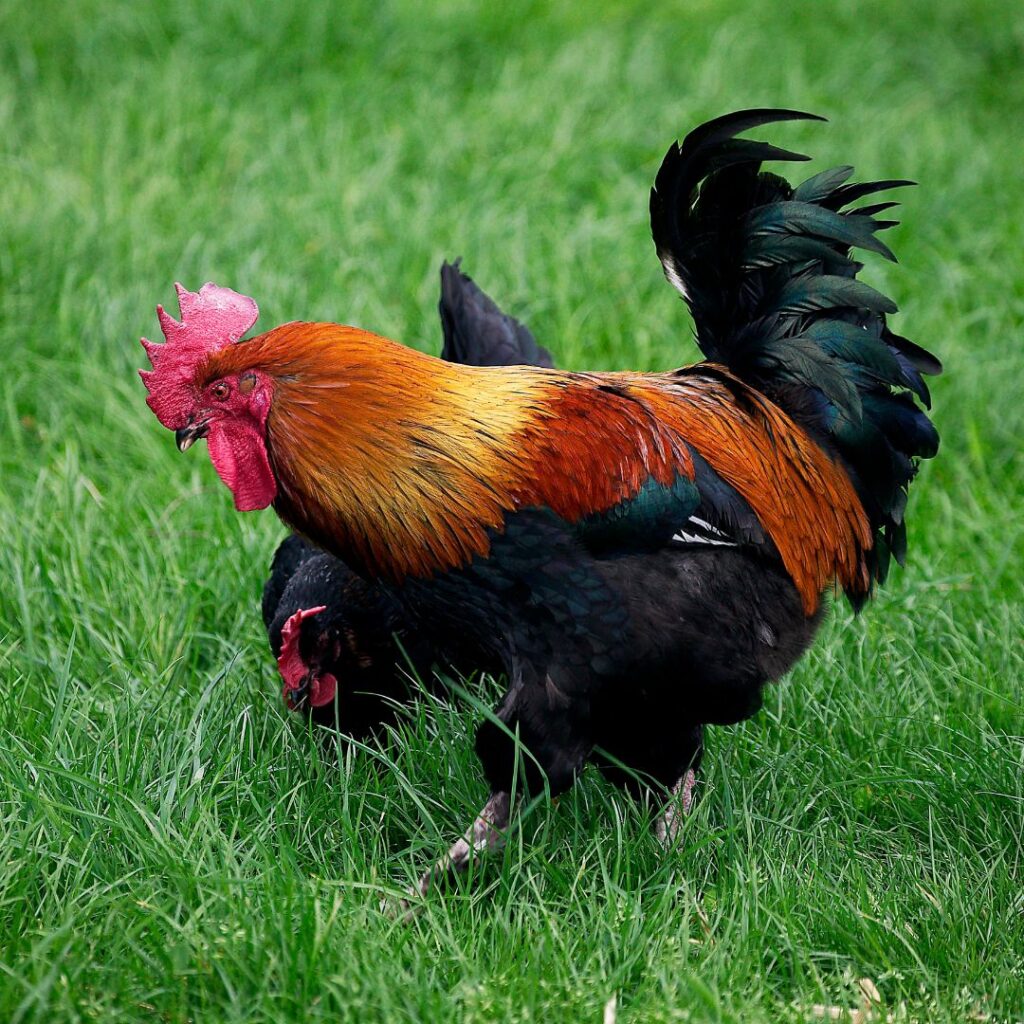
Black Copper Marans Hens; Dark Eggs and Production
When do they start laying eggs?
You’ll be waiting a while before being gifted with these beautiful chocolate brown eggs. Marans tend to mature slowly, and laying begins around eight months. There is always the occasional hen that owners have reported started laying sooner, so be sure to have nesting boxes fully prepared by six months.
What color and size eggs are Black Copper Marans Eggs?
The hens lay the darkest brown eggs you’ll lay eyes on. They are medium to large in size. Colors can vary from medium chocolate-colored eggs to a very dark brown to a deep reddish brown, also called chocolate brown. They are sometimes referred to as the chocolate egg layers. The Copper Maran egg yolk is rich and filled with the most delicious fresh egg flavor.
Read About Reasons Chickens Stop Laying Eggs here
How many eggs do Black Copper Marans Lay?
The French Black Copper Marans and all the breed color varieties lay approximately 200 of the darkest eggs you’ll ever see.
Some U.S. hatcheries offer hybrid Marans chicken breeds that boast upwards of 250+ dark brown eggs annually.
Read About The Araucauna Chicken and Their Eggs Here.

Is The Black French Black Copper Maran Chicken a Good Meat Bird?
The size of the rooster makes for a good meat bird. The Marans chicken was bred to be a dual-purpose bird. However, their slow maturity rate can lead to ‘tougher’ meat than a breed like the Cornish Cross. The meat on these birds is best suited for a slow cooker, soup, or stew meal.
Black Copper Marans Personality
The Maran chicken is popular for backyard flocks due to their friendly, docile nature. They tend to get along well with their coop mates and do not engage in bullying behavior.
Marans will defend themselves despite their peaceful disposition if more aggressive birds pick on them.
Are the Black Copper Marans Good As A Pet Chicken?
In addition to their calm demeanor, Marans are also known for being quiet and easy to handle, making them a great option for those who prefer to have a confined flock and even for family pet chickens.
Are Black Copper Marans Roosters Aggressive?
Roosters, in general, are more assertive than hens. The French black copper Marans rooster and the other varieties of Marans roosters are no exception. They are gentle and docile by nature but will defend their turf and stand up to any bullies in the flock without hesitation.

The Chicken Coop Size for Black Copper Marans Chickens
Most hobby farmers and backyard chicken keepers like to vary their flock with different kinds of chickens. Therefore, we will always recommend sizing up in your coops and runs. While others may recommend 4 square feet per bird, we’ll say 4 – 6 feet per bird.
Crowded chickens are more susceptible to sickness and can become aggressive toward one another. They also may not have enough room to stretch their wings and engage in natural behaviors like dust bathing.
While you may be tempted to save on space by cramming more chickens into a coop, remember that a happy chicken means healthier dark brown eggs and meat in the long run.
So make sure to provide plenty of room for your flock when setting up the coop. It’s worth the extra effort.
Space – The standard recommendation for chicken coop space is 4-6 square feet per bird, and if you can let them free-range daily, there is some latitude with this number. However, it’s always better to err on the side of more space rather than less.
Perch – Each chicken should have 8 inches of space for roosting per chicken. Chickens usually like to spread out more during the summer months. When it’s cold outside, you’ll notice that they will spend more time huddled together.

Nesting Boxes – As a Maran’s chicken owner, you may be anxiously waiting for those beautiful dark brown eggs. Remember, they can take up to 8 months to mature to egg-laying age.
One way to prepare for this is to have your nesting boxes ready before your hens start laying. One nesting box is recommended for every four hens, and a standard size of 12″x12″x12” works well. If the boxes are too large, your hens may choose to nest together, and you could end up with broken eggs.
Feeders and Waterers – Always be sure you have enough waterers and feeder sizes to accommodate the number of chickens you have.
Also, consider if you have large breeds in your flock, like a Cornish or Jersey Giant. Larger birds eat more. Less active birds eat more. Always be prepared to know your breed as well as possible.
Feed and water should be fresh at all times. Be sure you’re providing your chickens with reputable quality feed that includes all the essentials they need for their health. A good feed can even impact if your hens lay eggs.
The Chicken Run For Your Black Copper Marans chicken
Space – The Maran’s chicken’s like to explore. However, they are just as content exploring in a confined area. If you need to confine your flock with Marans, have plenty of space for perches, dust baths, and stretching their legs.
Keeping them in a run should have a minimum of 10-15 square feet for each bird.
To expand the living area, add perches at different levels and boxes or utility pails they can stand on.
However, if you give them free rein (aka free range) a few times each week, they will thrive on this time.
Shelter from elements – A safe and comfortable shelter can make all the difference in keeping your birds happy and healthy. Just as we need protection from the elements, so do our Black Copper Marans.
A shady area like a tarp or lean-to provides relief from the scorching summer sun, and a sturdy tent or coop protects them from wind and rain during the winter months. This gives them a chance to get some fresh air and exercise and ensures they have a safe spot to hunker down in when needed.
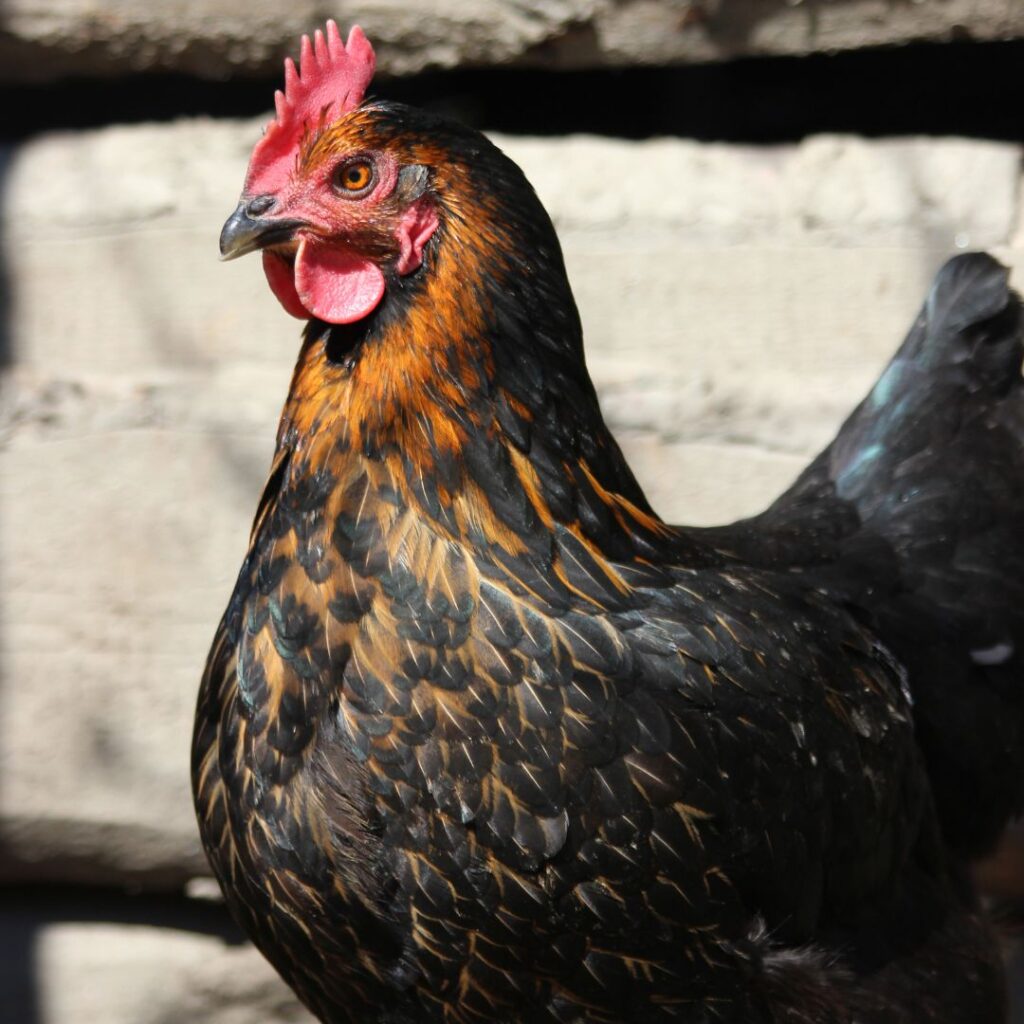
Fencing height – When you have Black Copper Marans, you’ll want your run to have a minimum of six-eight feet high fencing. This should provide a good height to keep your feathered friends contained and safe from ground predators.
Overhead predators like hawks can be kept out by covering your run with sturdy hardware cloth.
Dust Bath – As a chicken owner, part of your responsibility is to provide the right environment for your Black Copper Marans to thrive. One important aspect of this is offering them a dust bath area. Chickens naturally love to take dust baths, which helps them keep their feathers clean and rid themselves of pests such as lice and mites.
Setting up a dust bath area doesn’t have to be expensive or complicated – a simple dug-out spot in the run, or even an old tire filled with a dust bath mixture, will do just fine.
Black Copper Marans, in particular, are known for their beautiful dark feathers, and providing them with regular dust baths can help maintain their glossy coat. So don’t hesitate to give your chickens the chance to pamper themselves.
Free-Range and Foraging For Black Copper Marans
All Marans Chickens, including the French Black Copper Marans, are a great choice for the hobby farmer looking for a free-range breed. These birds are known for their love of foraging and free-ranging, often spending their days happily roaming around your yard or pasture. Giving them plenty of space to do this is important, as smaller runs or constant confinement can lead to overweight and less healthy chickens.
And not only will French Black Copper Marans (and other varieties) enjoy the exercise from free-ranging, but it also helps produce healthier and tastier eggs. So if you have room to let your Marans roam, they’ll appreciate the opportunity to stretch their wings and scratch at the earth in search of tasty treats.
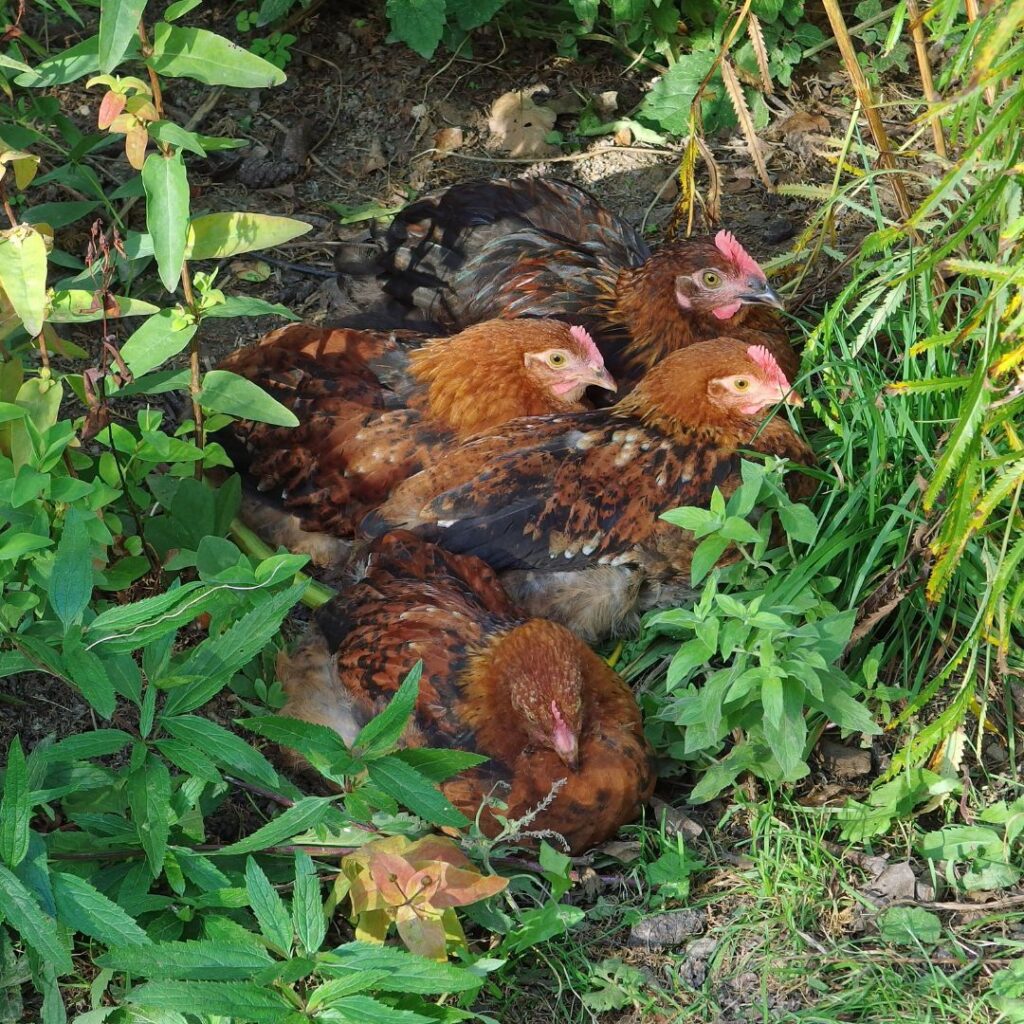
Are Black Copper Marans Chickens Noisy?
When it comes to raising chickens, some breeds are known for their vocal personalities. However, if you’re looking for a quieter option, the Marans chicken might be the right choice.
While they may still make some noise during egg-laying times or when startled, they generally aren’t as loud as other chicken breeds.
So, the Marans could be a good fit if your main concern is noise levels in your backyard or if you live in a suburban or urban area with close neighbors. The Marans chicken varieties are worth considering if a quieter breed is essential to your chicken-keeping journey.
Other chickens (hens) that are good for raising in the city are Ameraucanas, Australorps, Barred Plymouth Rock, Brahmas, Cochins, Cornish, Orpingtons, Rhode Island Red, Specked Sussex, and Wyandottes.

Are the French Black Copper Marans Good Urban (City) Chickens?
If you’re looking for a quiet backyard hen, consider adding Marans to your flock. These dark brown egg layers have calm dispositions and are known for their docility. Their ability to get along well in a mixed flock makes them a great addition to any urban backyard chicken coop.
Plus, the bonus of having different colored eggs to collect. In addition to being quiet, Marans also excel in other areas that poultry enthusiasts look for in backyard chickens. These birds are content in a confined run area and coop as long as they are provided adequate space. They lay tasty chocolate brown eggs (some with dark speckles) with rich and flavorful yolks, and they have striking feathers that come in various colors. Plus, they are hardy birds with robust immune systems. With the Marans chickens’ all-around excellent qualities, Marans are quickly becoming a favorite among backyard chicken owners.
Are The French Black Copper Marans Chickens Cold Hardy
The French Black Copper Marans is a resilient breed to cold weather (yes, cold hardy breed). However, precautions are needed to keep them healthy and safe in the harsh winter weather.
Winter Chicken Coop Prep – If you want to keep your Black Copper Marans safe and healthy, it’s essential to maintain a strong and secure chicken coop. Not only should the coop be firmly constructed to prevent potential predators from getting in, but it should also have proper ventilation and insulation to guard against excess moisture and promote fresh air circulation.
And don’t forget about the runs – your chicken’s outdoor living space should have dry areas for them to take shelter. It’s also crucial to check your fencing regularly for any weak spots or breaches that could put your flock at risk.
Winter Waterers – As happy and healthy chicken owners know, our feathered friends require a consistent supply of food and water to thrive. However, during the winter months, keeping those supplies easily accessible can present additional challenges. Chickens may not want to brave the cold to venture outside for their meals and water, so it’s important to have heated containers or refill more frequently to ensure they have enough to eat and drink.

French Black Copper Marans, for example, are known for their hearty appetites and may consume even more during the chilly winter months. Providing adequate food and water for your chickens is crucial for their well-being all year round. So don’t forget about refreshing their supplies, even if it means braving the elements yourself!
Frostbite – Black Copper Marans, like other chicken breeds with single combs, are at risk for frostbite. You can greatly reduce their risk of frostbite by applying a small amount of petroleum jelly to their combs before the temperatures dip to freezing.
Read about more Cold Hardy Chicken Breeds here.
Are French Black Copper Marans Chickens Heat Tolerant
When raising chickens, heat tolerance can be a major factor in choosing a breed. Black Copper Marans, for instance, tend to fare well in hot climates.
That said, providing plenty of shade in their run and good ventilation in the coop is still important. Consider a screened door or window to allow more airflow if you can. Poor ventilation can lead to toxic build-up from their soiled areas.
Shade can be a tarp, tent, or lean-to. A coop under a shady tree can be a big plus in hotter weather. If you have a smaller coop that can be moved, consider placing it in a shady part of your yard in the summer.
Don’t forget about fresh water, too – change it regularly and consider adding ice cubes on particularly hot days.
And just like any chicken breed, remember that even heat-tolerant Marans will appreciate some time indoors or under shade during the hottest parts of the day. These steps allow Black Copper Marans to thrive happily in warm weather.
Life Expectancy of the Black Copper Marans Chicken
Black Copper Marans (as well as all other varieties) have a slightly above-average life expectancy of 8 years. If allowed quality, balanced feed, proper care of the coop, and allow adequate space to exercise, you could easily see this chicken live even longer. They are a hardy, healthy breed.
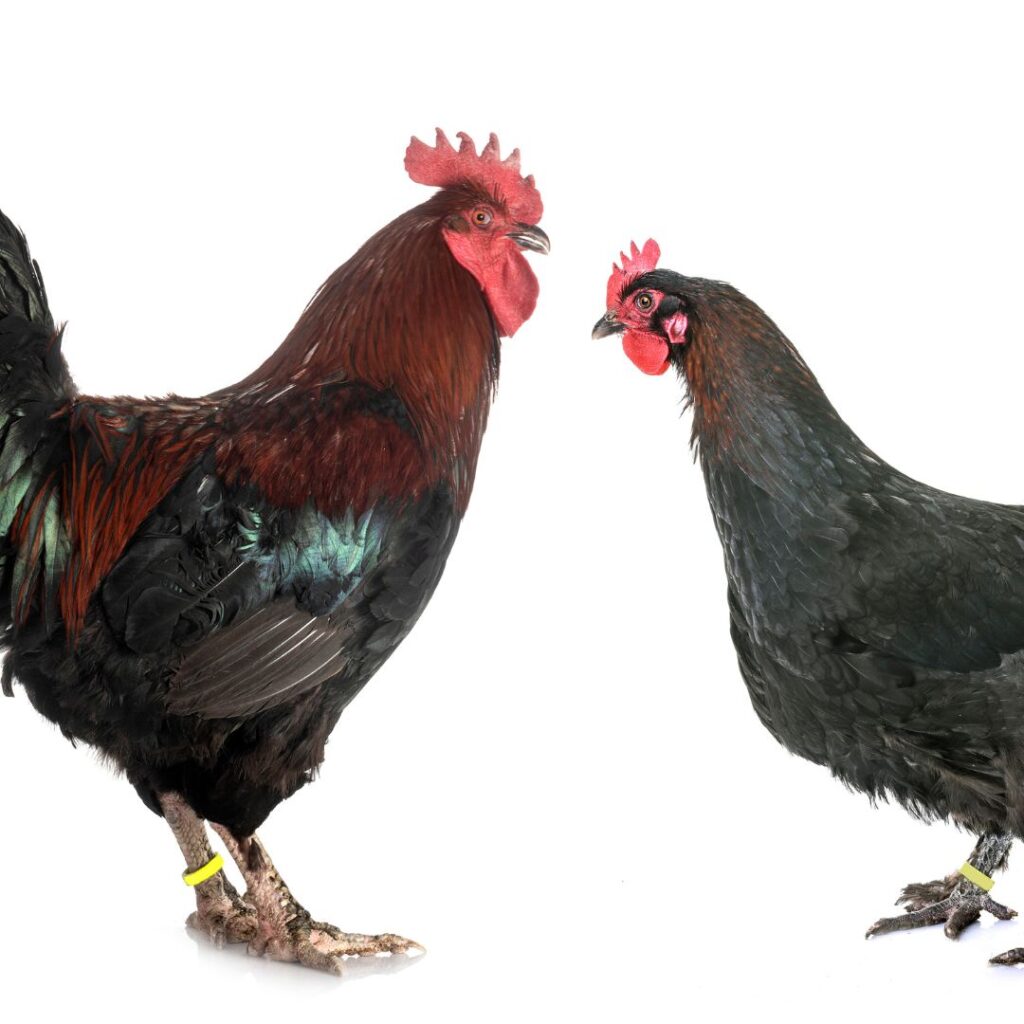
Is The French Black Copper Marans Right For Backyard Chicken Keepers?
The Black Copper Marans is a large breed, giving them the potential to lay large eggs. They typically lay about three eggs per week, but some can lay even more than that! While this breed may have a slower start to their laying cycle, they make up for it in egg production later on.
Another aspect to consider is their temperament. Black Copper Marans are generally described as docile and friendly, making them great choices for backyard chicken keepers who want to interact with their flock. However, it’s important to remember that every chicken is different and has its own individual personality.
Overall, Black Copper Marans are a beautiful addition to any backyard coop and can provide delicious, dark brown eggs for your family to enjoy.
And their dual-purpose origins mean the hens excel at egg-laying (those dark eggs!) and meat production.
The Black Copper Marans Chicken is hardy in all weather and has no known health problems. They’re also great at free-ranging, helping to control pests in your backyard or farm naturally.
If you’re a backyard chicken keeper looking for the perfect addition to your flock, look no further than the Marans. Are you a new chicken keeper? Read out tips on raising backyard chickens. These lovely birds have it all – a gentle temperament and quiet demeanor, making them easy to integrate into even the most diverse flocks.


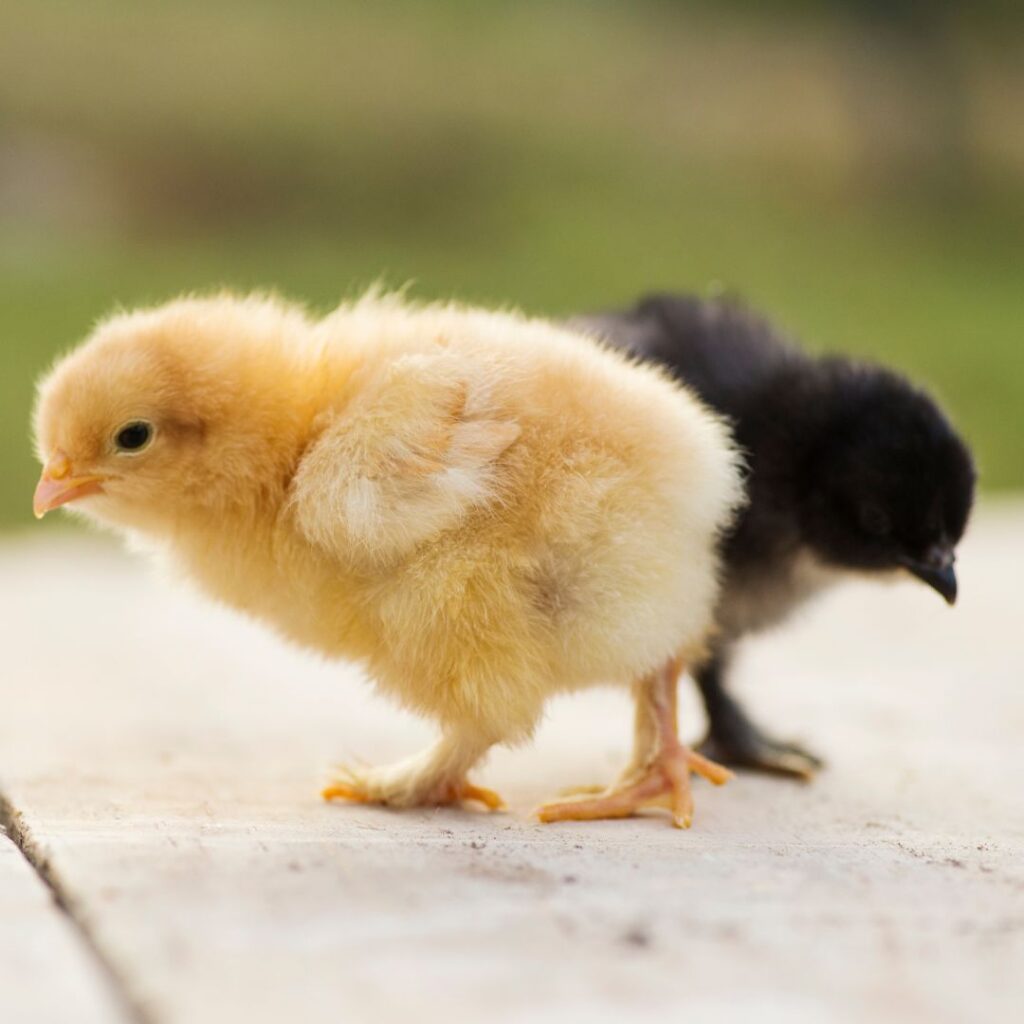
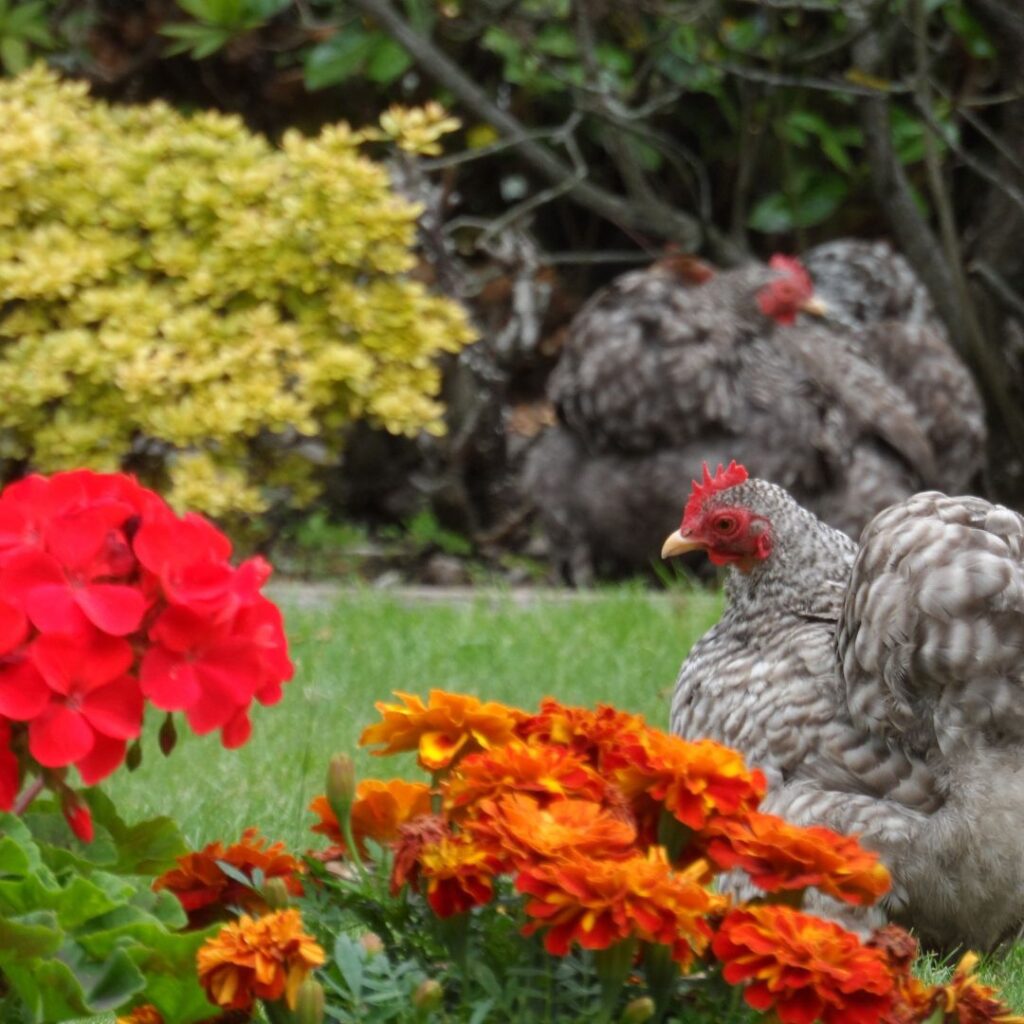
Pingback: 5+ Best Egg Laying Chicken Breeds; Qty, Color, Size Of Eggs